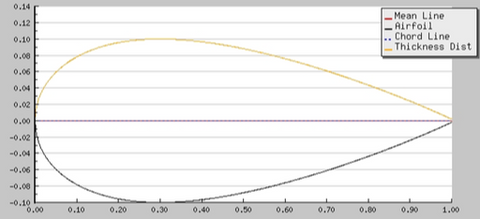With disc brake bikes becoming more popular in cycling, rim widths aren't limited by brake calipers anymore which presents an opportunity to explore whether wider rims can be made faster by investigating aerodynamic theory. This blog explores the theory, and why we decided to create our Superlight (SL) Wide+, disc-specific range.
Intro
When it comes to wheel Aerodynamics, there are lots of factors to consider in order to get a slick, wind-cheating, slippy wheelset and although it is well known deeper section profiles are more aerodynamic than shallower box section rims, one area is often overlooked is the relationship between the tyre and rim. But how important is it?
The Leading Edge, and what's behind it...
It'll come as no surprise that it's the tyre (leading edge) that starts the aerodynamic process when you're riding a bike, and how this interacts with the rim is crucial for air-flow over a wheel system.
For wheel aerodynamics, the accepted theory to follow is that of the National Advisory Committee for Aeronautics (NACA) for aerofoils, and Image 1 illustrates how a NACA profile looks; not too dissimilar to an airplane wing, unsurprisingly.
NACA outline several key aspects for aerodynamics; but there's one very crucial area to consider that directly affects the aerodynamic performance of wheel systems - the widest point of an aerofoil should be about 33% from the leading edge to allow smooth airflow. This is known as the chord line.
Image 1 - Illustration of NACA Aerofoil Profile showing chord line ~33% from leading edge

As riders, understanding how this shape affects wheel performance is quite important if you want aerodynamic gains. For most of us that run aero wheels, the widest cross-sectional point is usually the tyre which is right at the leading edge, nowhere near the 33% chord line required for smooth airflow.
When this is the case, airflow does not follow a natural NACA profile. Rather than flow naturally over the tyre / rim, disrupted air gets pulled towards the rim, effectively 'clinging' to the surface until it's thrown from the trailing edge; as illustrated in Image 2. Ultimately, by having a tyre wider than the rim, the tyre now plays the dominant role in aerodynamics, and the rim now plays a more diminished role = Increased drag, less speed.
Image 2 - Aerodynamic drag illustration when tyre is wider than rim

*red arrows illustrate drag caused by having the tyre as the widest cross-sectional point on a deep section rim.
The Solution: Reduce tyre width, or Increase rim width
I'm sure you have figured it out already but for a wheel system to have improved aerodynamics, there are 2 things we can do; (i) reduce the size of tyre so it's narrower than the rim, or (ii) increase the width of rim, so the widest point is closer to the chord line.
For point (i), this isn't an option for many as wider tyres are; well, really good at everything - increased handling, comfort, traction, stability & volume etc.
For this reason, we started our Wide+ project to explore whether we could increase rim width to offer a more aerodynamic profile that conformed to NACA.
Scribe SuperLight Wide+ Range
For our SuperLight Wide+ Wheelsets, the rims are specifically designed to work with either a 25mm or 28mm tyre. Our goal was to work backwards to bring models to market that fit a respective tyre size, but still allow the wheel system to have improved aerodynamics.
Thus, by simply running a tyre narrower than the widest point on the rim, the leading edge (tyre) comes up narrower than the widest point of the rim, which subsequently allows the rim to play the dominant role in aerodynamics, whereby; air will flow more efficiently over the wheel system - pushing drag to the trailing edge, as illustrated in image 3.
Image 3 - Illustration of how aerodynamic drag is moved by having a wider, more elliptical rim profile: CORE SuperLight+ 40 (1,314g)

*Scribe CORE SuperLight+ 40 (25mm INT & 32mm EXT)
What about Yaw (wind) angles?
For our SuperLight Wide+ Wheelsets, the trailing edge cross-section is truncated in design to allow for a wide variety of yaw angles (Yaw refers to the apparent angle of wind in relation to the direction of wheel). On flat body rim profiles, air-flow separates early on the opposing side which creates a large wake, and therefore increases drag. This also reduces wheel stability as illustrated in Image 4.
Image 4 - Air-flow illustration of traditional deep section flat body.

The SuperLight Wide+ Range, our rims are truncated (Elliptical) and the trailing edge profile helps keep air-flow closer on the opposite side which reduces drag, and offers increased wheel stability, as illustrated in image 5.
Image 5 - Air-flow illustration for Scribe CORE SuperLight+ 40 Disc with elliptical profile

If you have any questions about our high-performance SuperLight Wide+ Wheelsets, or would like to know more about our product, please don't hesitate to contact us at team@scribecycling.com!
Wind-Tunnel Verified Performance

In CyclingNew's recent wind-tunnel testing, our CORE SuperLight+ 60 Disc pushed the world's fastest wheels to the edge, and then some! Going head-to-head against 17 other wheel brands (such as Princeton, ENVE, Roval), the benchmark our wheels set was no surprise to us... because when we boast about the level of technology in our performance specifications, we don't lie.
Not only did we feature in the top spots for all tested speeds, we were the "COST-TO-WATT" option for those looking to go fast without spending thousands on a wheelset.
Check out the results - HERE!








